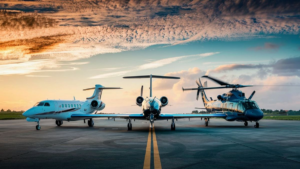When it comes to military strength and capability, the United States Navy stands as one of the most formidable forces in the world. An integral component of this naval power lies in its vast fleet of aircraft, which play crucial roles in defense, reconnaissance, transport, and more. Let’s delve into the details of the aircraft inventory of the US Navy.
Types of Aircraft
The US Navy operates a diverse range of aircraft, each tailored to fulfill specific missions and objectives. These aircraft can be broadly categorized into:
- Fixed-wing aircraft
- Rotary-wing aircraft
- Unmanned aerial vehicles (UAVs)
Fixed-wing Aircraft
Fixed-wing aircraft form the backbone of naval aviation, providing capabilities for air superiority, strike missions, electronic warfare, reconnaissance, and maritime patrol. Notable examples include:
- F/A-18 Hornet
- F/A-18 Super Hornet
- E/A-18G Growler
- P-8 Poseidon
- E-2 Hawkeye
Rotary-wing Aircraft
Rotary-wing aircraft, commonly known as helicopters, serve vital roles in anti-submarine warfare, search and rescue, troop transport, and special operations. Key helicopters in the US Navy inventory include:
- SH-60 Seahawk
- MH-60R Seahawk
- MH-60S Knighthawk
- MH-53E Sea Dragon
- CH-53E Super Stallion
Unmanned Aerial Vehicles (UAVs)
Unmanned aerial vehicles, or drones, have become increasingly vital in modern military operations due to their versatility and cost-effectiveness. The US Navy utilizes various UAVs for reconnaissance, surveillance, and targeted strikes, including:
- MQ-4C Triton
- RQ-4 Global Hawk
- MQ-8 Fire Scout
- MQ-25 Stingray
Quantity and Distribution
The exact number of aircraft in the US Navy’s inventory fluctuates over time due to factors such as procurement, retirement, and operational requirements. However, as of the most recent data available, the US Navy operates several thousand aircraft distributed across its various commands, fleets, and squadrons.
Carrier Air Wings
Carrier Air Wings (CVW) are the primary air components aboard aircraft carriers, comprising multiple squadrons of different aircraft types. Each CVW typically consists of a mix of fighter jets, strike aircraft, electronic warfare aircraft, and support aircraft, providing a versatile and formidable aerial capability.
Shore-Based Aircraft
In addition to carrier-based aircraft, the US Navy maintains numerous shore-based aircraft units deployed around the world. These units support a wide range of missions, including coastal defense, maritime patrol, surveillance, and training.
The US Navy boasts a vast and diverse inventory of aircraft, ranging from fighter jets and helicopters to cutting-edge unmanned aerial vehicles. These aircraft play crucial roles in maintaining maritime superiority, protecting national interests, and projecting power globally.
Training and Simulation
Alongside the operational fleet, the US Navy invests significantly in training and simulation programs to ensure its pilots and crew members are proficient in handling various aircraft types and scenarios. Simulation facilities and training exercises are crucial for maintaining readiness and effectiveness across the entire spectrum of naval aviation.
Frequently Asked Questions
| Question | Answer |
|---|---|
| How many aircraft carriers does the US Navy have? | The US Navy typically operates around 11 aircraft carriers, including Nimitz-class and Ford-class carriers. |
| What is the role of UAVs in naval operations? | Unmanned Aerial Vehicles (UAVs) serve various roles in naval operations, including reconnaissance, surveillance, and targeted strikes, enhancing situational awareness and operational capabilities. |
| How does the US Navy decide on aircraft procurement? | Aircraft procurement decisions are influenced by strategic needs, technological advancements, budget considerations, and mission requirements. The US Navy collaborates with defense contractors to develop and acquire aircraft that meet these criteria. |
See also:






